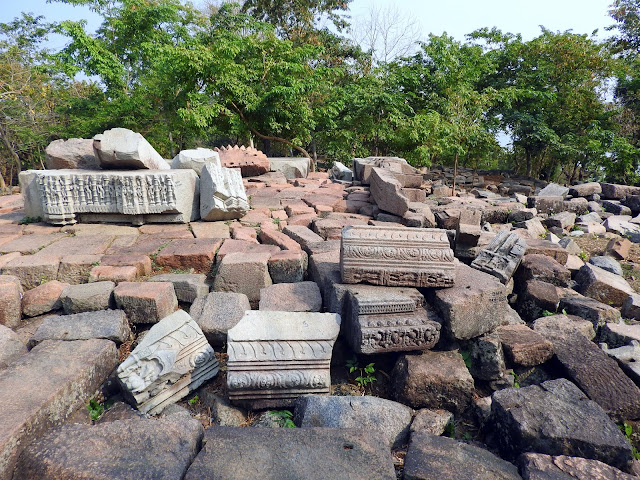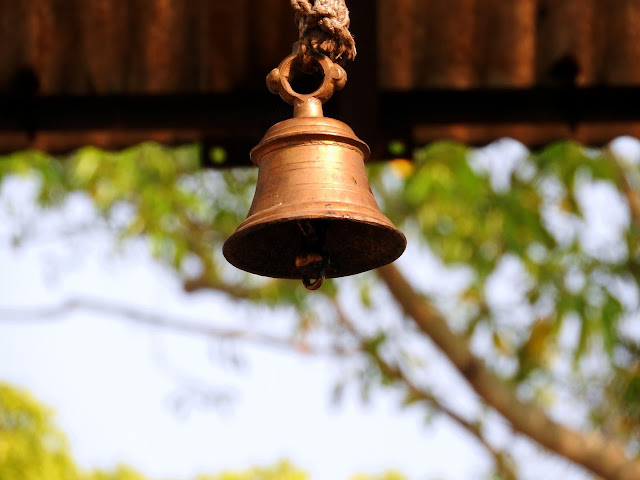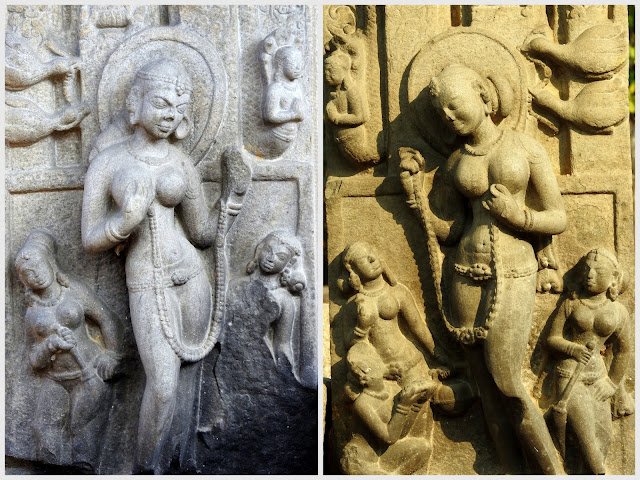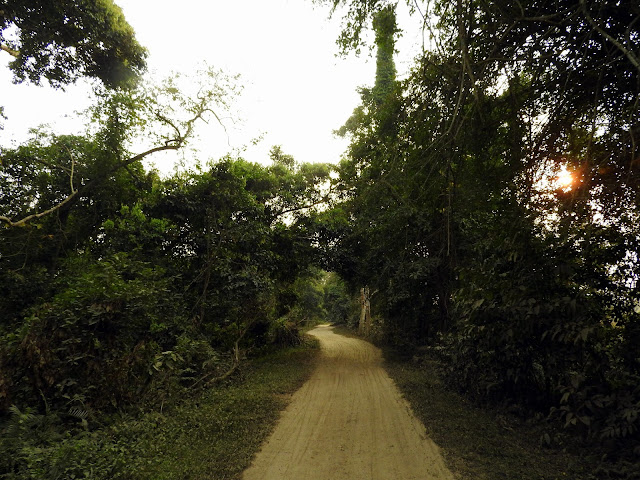“Elita, you cannot come to
Nagaland right now. There is an indefinite state-wide ‘bandh’ beginning today.
I am so sorry about this” read the text message.
The effects of having spent five days in heavily militarised Manipur
(though very safe with nothing untoward happening at all) had just begun to
wear off as we settled ourselves in Mizoram’s Aizawl.
But Aizawl was going to be a short visit from the very beginning – a
mere 48 hours.
Many route-maps through India’s northeast had been drawn and redrawn
in the months preceding my impeding journey to the region. I was on version 7 of that route-map the day I left Mumbai for
Guwahati mid-January earlier this year.
That SMS from my friend in Nagaland about the curfew alerted my prefrontal cortex that
version 8 would have to be birthed now. Evidently, my amygdala was in the least
bit pleased.
Unrest in the northeast has lent a bad name to the region. But if you
would have read my account from Manipur (and stand by for one from Nagaland), you will
know that while conditions are challenging, it is the locals who are most
affected. Tourism, on the other hand, can actually help the locals because of
the revenue it brings. In other words, don’t let the news paralyse your plans
of exploring the region.
But back to version 8 of my route map, my friend and I were crouched
over our phones at our guesthouse in Aizawl, pinching our screens reacquainting
ourselves with Google Maps and finding our next best alternative.
Flying out of Lengpui Airport the morning after that SMS meant
returning to somewhat familiar environs after 10 odd days; during which we’d
hopped in and out of Tripura, Manipur and Mizoram. Yes, we were back in
Guwahati and it was a reaffirmation that this capital city of Assam was like
how most capital cities are – urban and therefore, cacophonous, congested and
also, dirty.
 |
| Aizawl's Lengpui Airport |
But among some of the things most capital cities get right, Guwahati
has been redeeming with its food, in general and street food, in particular.
 |
| When in India's east, always say YES to puchkas (distant relatives of Delhi's gol-guppes and Mumbai's paani-puri) |
Guwahati - Tezpur – Kaziranga
With our train tickets from Guwahati to Dimapur cancelled, we made our
way to Tezpur. What I imagined would be a stopover to catch up with a friend
turned out to be an insight into the intrigue that is Tezpur.
The cultural capital of Assam and located along the banks of the
mighty Brahmaputra, there is more to Tezpur than meets the eye. Mild and calm
in contrast to Guwahati, Tezpur has a pace and charm of her own that you gently
begin to experience once you’re on the Kolia Bhomora Setu.
My ignorance and curiosity got my friend to introduce us to her uncle
who shared his many recommendations with us. And since we had just that day in
hand and had to obtain a new Inner Line Permit (ILP) for Arunachal Pradesh on
priority - owing to the rejig and route-map number 8 - we settled to make a
visit to two key points of interest.
P.S.: Obtaining a new ILP was no sweat at all. Find your way to the
Deputy Resident Commissioner’s office in Tezpur and fill out a form requesting
for a new permit and submit two photographs and a self-attested copy of a
government recognised ID card. And you’re done.
It is the same process you would follow for either of the three states
– Nagaland, Mizoram and Arunachal Pradesh – irrespective of where you apply for
the permit.
Tezpur
Here’s a bit of a backstory.
Before Tezpur was named so, it was known as Sonitpur which today is
the name of the district. Interestingly, both Sonit and Teza translate to mean
blood; the former in Pali and the latter in Sanskrit. According to a myth, a
battle ensued between the armies of Krishna and Shiva that resulted in a bloodshed,
leaving the entire place drenched red.
When myth and history combine, they sure do create something beyond
imagination!
This was some of the nuggets of information I was able to pick from
our conversation with an official from the Guwahati Circle of the
Archaeological Survey of India in Tezpur.
But between having some time to kill and then going to re-apply for
our ILP, we made two stopovers:
(i)
Bamuni Pahar:
These are but
ruins today. A heap comprising of the most intrinsically carved rubble. To a
passer-by, like yours truly, these seem unseen and invisible to the rest of the
world.
I was naturally tempted
to enter my own mind place as if to recreate what this structure might have
been dating back to sometime between the 6th and 10th century
AD – because I really wish there was more information to glean from.
Legend has it that
Aniruddha, Krishna’s nephew, fell in love with Usha, the daughter of Banasura -
a thousand-armed asura king, who disapproved of the match and had imprisoned
Aniruddha in this place.
 |
| Ruins that are now being managed by the Archaeological Survey of India |
 |
| Ruins that are now being managed by the Archaeological Survey of India |
 |
| Ruins that are now being managed by the Archaeological Survey of India |
 |
| Ruins that are now being managed by the Archaeological Survey of India |
 |
| Ruins that are now being managed by the Archaeological Survey of India |
(ii)
Da Parbotia
Not too far away
is yet another relic – Da Parbotia: a door frame that is a part of the remains
of a temple consecrated to the Ganga and Jamuna who are carved and depicted on
the lower sections of the doors, holding garlands in their hands. This too is
believed to date back to somewhere around the 10th century AD.
 |
| Da Parbotia: the door frame |
 |
| Temple bell |
 |
| Carvings of Ganga and Jamuna on the door frame |
 |
| Up and close -- Da Parbotia: the door frame |
When not rummaging through temple ruins and failing miserably at
distilling myth from history, I was found wolfing down the spreads available at
Spring Valley. Why I heard about the Karbi’s for the first time when I was
wiping clean the Karbi Thali. The Karbis, I learnt, have been an indigenous
group from Assam who have had to flee invasion and leave behind their original
inhabitation in present-day Kaziranga on multiple occasions.
Today, the Karbis are the third largest tribal community in Assam
following the Bodos and the Mishings.
Kaziranga
The next morning, we hopped on to a state-run bus service to get to Kaziranga
National Park – home to the world’s largest population of one-horned rhinoceros
besides tigers, elephants, wild water buffalos, swamp deer and avian population. The national park is a UNESCO World Heritage Site.
For me, it was my Animal Planet meets Nat Geo moment, sharing a
physical space with the many creatures of the wild. Seeing these beings in
their natural habitat has been such an out and out rewarding sensation.
Every once in a while, every one of us SHOULD step out of our rooms,
our cubicles, our devices and more importantly, our heads and start seeing the
world around us.
Seeing it for what it is; NOT what it is projected as being.
And maybe then, like Lennon sang, “…the world will live as one…”
--
#BeYouForYou
I am facilitating a Be You For You workshops in Mumbai and Bangalore! Drop me an email on nomadicthunker[at]gmail[dot]com if you're interested in attending and would like to know more.
August 19: https://www.facebook.com/events/457157031305289/
Upcoming Bangalore workshop dates
September 23: https://www.facebook.com/events/1854052274855147/
Sign up and register NOW









